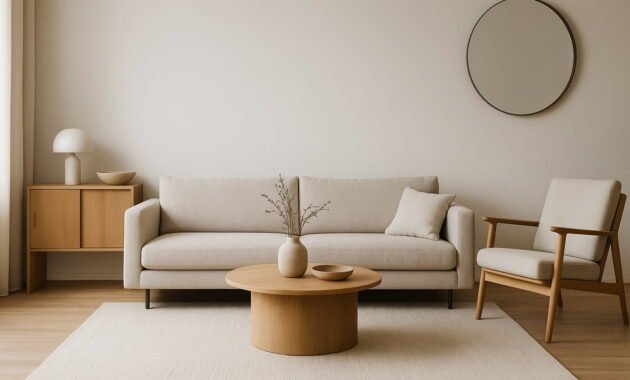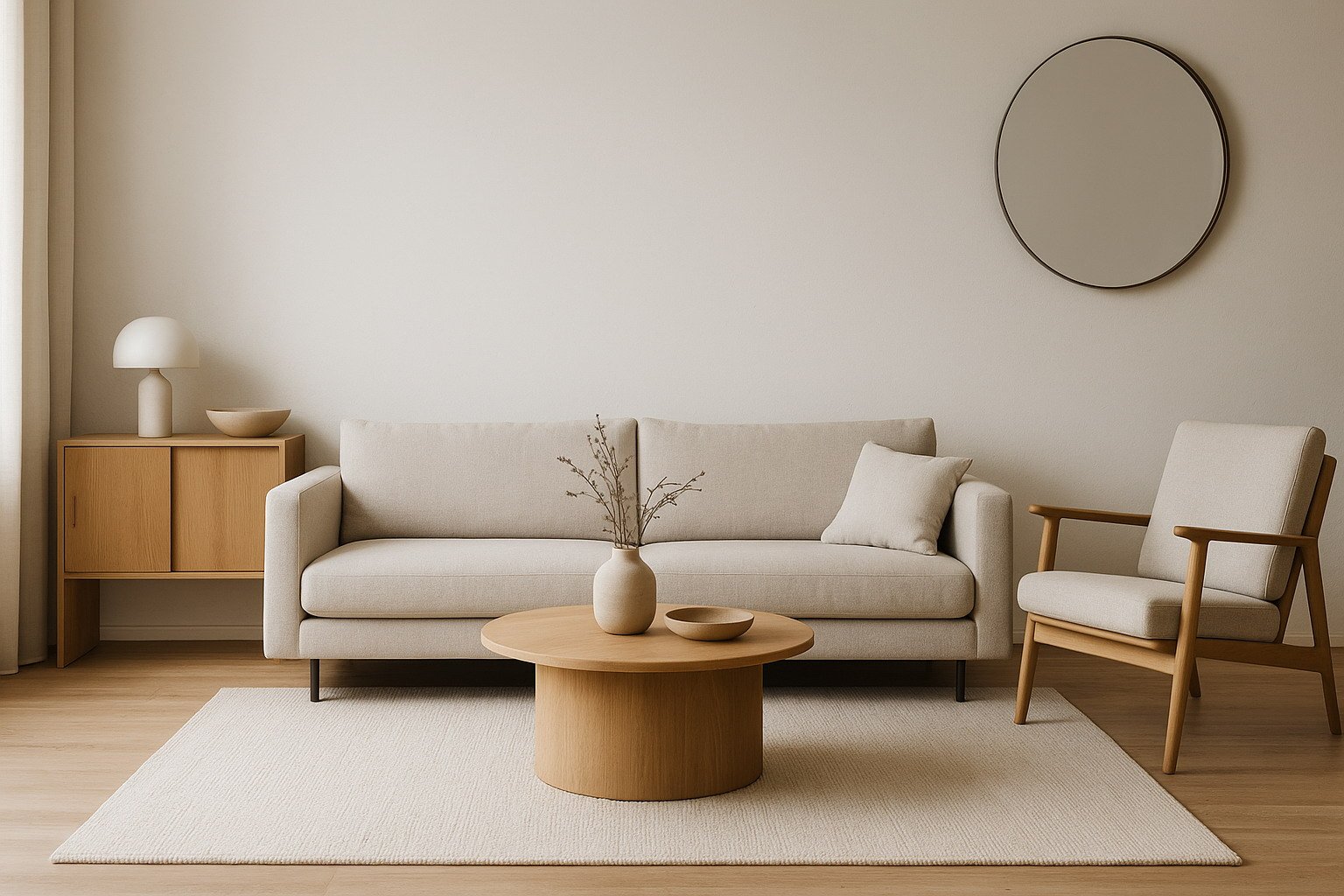Minimalist design has evolved far beyond its roots in sparse spaces and monochrome tones. As we head into 2026, modern minimalist furniture embraces functionality, innovation, and warmth—blending clean aesthetics with conscious living. Whether you’re designing a compact city apartment or revamping a spacious home with intention, this year’s ideas are rooted in less, but better.
In this article, we’ll explore the top modern minimalist furniture design ideas for 2026, covering materials, trends, and practical inspirations that balance style, utility, and sustainability.
Core Principles of Minimalist Furniture Design
Before diving into 2026’s trends, it’s essential to revisit the foundation of minimalist furniture design. The core of this design philosophy isn’t about having fewer things—it’s about having the right things.
Key Principles to Keep in Mind:
- Form Follows Function: Every piece must serve a purpose. If it doesn’t, it’s just visual clutter.
- Clean Lines and Balanced Proportions: Minimalist furniture often features geometric forms and understated silhouettes.
- Negative Space Is Intentional: What you don’t fill is just as important as what you do. Breathing room gives furniture space to shine.
- Natural Light Enhancement: Minimal furniture allows light to flow freely, making rooms feel more open and calming.
- Quality Over Quantity: One well-crafted chair is more valuable than three that fade with trends.
“Minimalism is not a lack of something. It’s simply the perfect amount of something.” — Nicholas Burroughs
These principles have stood the test of time, but in 2026, designers are applying them in more sophisticated, innovative, and sustainable ways.
Trending Materials for 2026
The materials used in modern minimalist furniture have shifted in 2026 toward durability, environmental responsibility, and sensory appeal. Shoppers are no longer choosing between beauty and sustainability—they expect both.
Top Minimalist Furniture Materials to Watch in 2026:
| Material Type | Characteristics | Popular Uses |
| Reclaimed Oak | Warm, textured, sustainable | Dining tables, coffee tables, shelves |
| Bamboo Composite | Lightweight, strong, fast-regenerating | Chairs, bed frames, storage units |
| Brushed Aluminum | Sleek, matte finish, corrosion-resistant | Frames, legs, open shelving |
| Recycled Plastic | Moldable, eco-conscious, color customizable | Modern chairs, stools, wall-mounted pieces |
| Hemp Upholstery | Breathable, antimicrobial, renewable | Sofas, lounge chairs, cushions |
Why These Materials Matter:
- Sustainability is non-negotiable: Consumers in 2026 are making value-based purchases, often favoring brands with verified eco-credentials.
- Textural contrast adds visual interest without ornamentation—essential in minimalist rooms.
- Durability & maintenance: Materials must be easy to clean, long-lasting, and resilient to shifting indoor climates.
Design Tip: Combine matte black steel legs with a natural wood top for an elegant contrast that embodies minimalist harmony.
Neutral & Earth-Toned Palettes
In 2026, color in minimalist design isn’t just about white walls and black accents—it’s about balance, warmth, and connection to nature. This year, interior palettes are embracing soft, earthy tones that promote serenity and depth.
Popular Minimalist Color Palettes for 2026:
| Base Color | Accent Tones | Ideal Use |
| Warm Taupe | Charcoal, Blush | Living room seating, walls |
| Soft Olive | Burnt Umber, Ivory | Dining chairs, cabinetry |
| Sand Beige | Slate Gray, Terracotta | Bedroom furniture, textiles |
| Ash White | Muted Gold, Sage | Kitchen islands, side tables |
“In minimalist spaces, colors should whisper, not shout.” — Yoko Inoue, Furniture Designer
These tones enhance natural materials, improve light diffusion, and offer more dimension than stark white. Layering subtle shades adds richness without breaking the minimalist aesthetic.
Multi-Functional Minimalist Pieces
As urban living spaces shrink and hybrid lifestyles become the norm, multi-functional minimalist furniture is no longer a trend—it’s essential.
Must-Have Multi-Use Furniture Ideas for 2026:
- Foldable Wall Desks: Ideal for remote work setups; fold them away after hours to reclaim space.
- Sofas with Hidden Storage: Streamlined and elegant, yet practical for small apartments.
- Modular Shelving Units: Customize layouts based on needs—books, art, or a plant display.
- Transforming Coffee Tables: Expandable tables that convert into work surfaces or dining tables.
- Stackable Stools & Chairs: Clean-lined and space-saving without compromising on style.
Case Study: Japanese brand Muji introduced a modular seating system in early 2026 that sold out within weeks. It featured reconfigurable cushions, low-profile design, and hidden compartments—perfect for minimalist homes under 900 sq ft.
This shift towards functionality aligns with the minimalist mantra: “everything you own should serve a purpose or bring you peace.”
Tech-Integrated Minimalism
One of the most exciting developments in minimalist furniture design for 2026 is the seamless integration of smart technology. But instead of clunky gadgets, tech is now invisible, intuitive, and enhances the clean aesthetic.
Examples of Tech-Forward Minimalist Furniture:
- Smart Coffee Tables with touch control lighting, wireless charging pads, and built-in speakers.
- Adjustable Beds with app-based sleep settings and minimalist headboards.
- Smart Desks that auto-adjust height, monitor posture, and sync with health apps.
- Voice-Controlled Lighting Systems embedded into shelving or mirror frames.
Design Insight: Modern homes no longer require cluttered tech accessories. Furniture now absorbs functionality, making smart living natural and seamless.
Quote from Industry Insider:
“Minimalism in 2026 isn’t anti-technology—it’s pro-intentional technology. The best furniture disappears into your life while enhancing it.”
— Clara Nguyen, Lead Designer at NestForm Studios
Floating & Wall-Mounted Designs
The illusion of floating furniture is a defining visual cue of 2026’s minimalist interiors. These designs elevate rooms—literally and aesthetically.
Trending Wall-Mounted Concepts:
- Floating Consoles: Replace bulky entertainment units with sleek wall panels.
- Wall-Mounted Desks: Paired with minimalist stools or fold-away chairs.
- Floating Nightstands: Provide function without taking up floor space.
- Toilet & Sink Units: Especially popular in minimalist bathrooms for a clean, airy look.
Benefits:
- Increases visual space, especially in small rooms
- Easier cleaning and floor access
- Emphasizes architectural features
A floating design can make a room feel twice as large—and twice as modern—without adding a single square foot.
Minimalist Seating Innovations
Seating takes center stage in 2026 as designers reimagine comfort through the lens of minimalism.
Innovative Minimalist Seating Designs:
- Low-Profile Sofas: Wide, grounded frames with soft, single-tone fabric.
- Backless Benches: Doubles as seating and display surfaces.
- Sculpted Lounge Chairs: Ergonomic but boldly simplified in shape.
- Armless Seating: Reduces visual clutter while maintaining comfort.
Fabric Trends:
- Brushed cotton blends
- Eco-linen
- Tactile vegan suede
Pro Tip: Combine organic shapes with neutral upholstery to keep the room grounded and inviting, rather than sterile.
Statement Minimalism: Bold Yet Simple
Minimalism doesn’t mean boring. In 2026, the best designs quietly command attention with one strong, sculptural piece per room.
Examples of Statement Pieces:
- A curved concrete coffee table
- An oversized monochrome light fixture
- A raw-edge wood dining table
- A single asymmetric armchair
The key is contrast. One impactful object, when placed in an otherwise restrained environment, becomes a natural focal point.
Open Storage and Minimal Shelving
Open storage encourages intentional living—and forces you to keep only what’s beautiful or useful. In 2026, open systems are lighter, smarter, and more elegant.
Minimalist Storage Concepts:
- Grid Shelving Systems with customizable layouts
- Freestanding Open Wardrobes for capsule clothing collections
- Ladder Shelves used as vertical art and storage hybrids
- Glass or Wire-Framed Units that feel airy and modern
Use baskets, trays, or matching containers to reduce visual chaos while embracing openness.
Minimalist Dining Concepts
Dining areas continue to evolve with understated elegance and flexibility at their core. The 2026 dining room is functional, breathable, and unfussy.
Popular Dining Furniture Trends:
- Thin-Leg Tables with chamfered edges and matte finishes
- Stackable Chairs in wood-metal hybrids
- Bench Seating to optimize space and flexibility
- Tone-on-Tone Tabletop Accessories for a cohesive, quiet look
Combine natural woods with muted ceramics to enhance the sensory experience without visual noise.
Conclusion: Curating Your 2026 Minimalist Furniture Vision
Modern minimalist furniture design in 2026 is a refined celebration of purpose, elegance, and innovation. From earth-toned color palettes to tech-integrated seating, today’s minimalist spaces are more human-centered and livable than ever before.
To summarize the 2026 trends:
- Focus on function and form
- Invest in quality, modular pieces
- Integrate smart features without clutter
- Choose materials that tell a sustainable story
- Let each piece breathe—curate, don’t crowd
If you’re updating your space this year, let minimalist design guide you not just to a better-looking home—but a better-feeling one, too.







